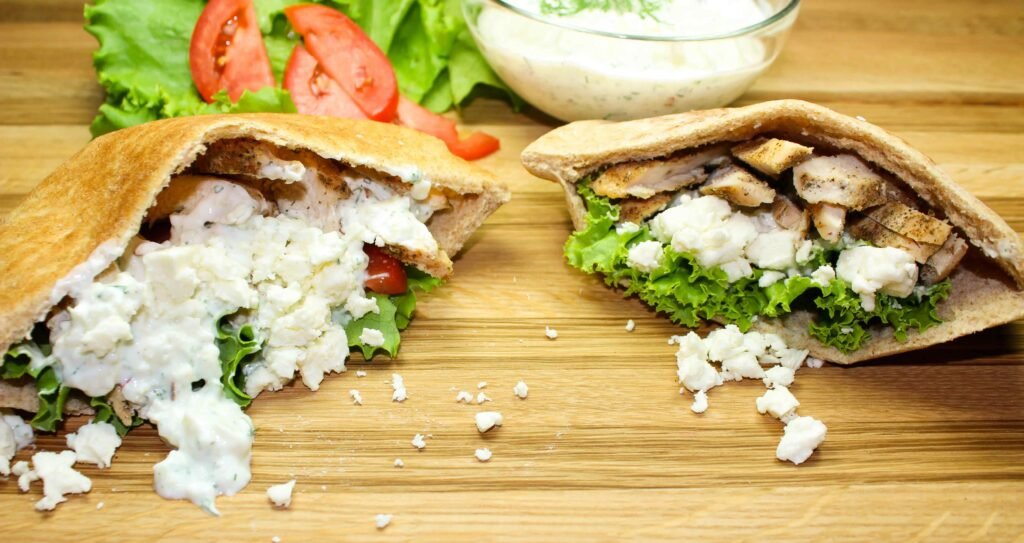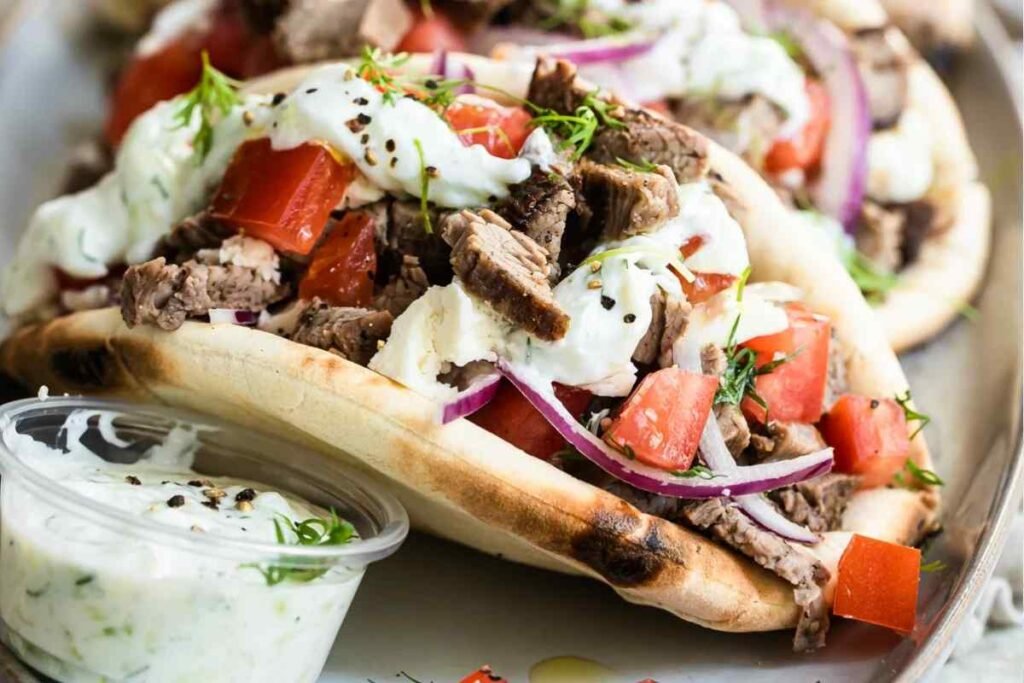Gyro meat, a culinary icon from the heart of Mediterranean cuisine, often leaves diners wondering about its origins.
Typically, lamb is the star of this savory dish. But which part of the lamb graces our plates? While we reveal the specific cuts used, there’s a surprising twist to its preparation that might just pique your interest.
Gyro meat, a beloved component of Greek cuisine, traditionally comes from lamb. Specifically, the most commonly used parts are the leg or shoulder, due to their tenderness and flavor. These cuts are seasoned and then cooked on a vertical rotisserie, creating the succulent slices served in gyro dishes. This method ensures a juicy, flavorful meat ideal for the classic gyro.
The Origins of Gyro: A Greek Culinary Staple

Gyro, a dish deeply embedded in the rich culinary heritage of Greece, emerged as a practical and flavorful method for making the most of leftover meats. Its creation wasn’t merely by chance but a thoughtful innovation.
The ancient Greeks, recognizing the need to preserve meat without the advantage of modern refrigeration, devised a cooking technique that would both prolong the life of their meats and enhance their taste.
This technique involved arranging spiced meat trimmings into a cone-like shape and slow-roasting them on a vertical spit.
This method facilitated uniform cooking and simplified serving, establishing gyro as a fundamental element of Greek culinary tradition.
Its development showcases a deep appreciation for making the most of available resources, maximizing taste, and adapting culinary practices, highlighting gyro’s significant impact on international cuisine.
What Makes Lamb Ideal for Gyro?
Lamb, among various meats used for gyro, is distinguished by its unique flavor and softness, pairing well with traditional spices and cooking methods specific to this dish.
The distinctive fat content in lamb enhances its juiciness and taste, especially when slow-roasted or grilled, as is customary for preparing gyro.
This meat’s ability to absorb a wide array of spices, from garlic and oregano to more intricate mixes, without overshadowing its natural richness, positions it as the perfect choice for gyros.
Moreover, the softness of lamb, achieved through meticulous cooking, guarantees that every bite of the gyro is moist and fulfilling, capturing the culinary spirit and heritage of this much-loved dish.
What Part Of Lamb Is Used For Gyros Meat?

Choosing the ideal cut of lamb is crucial for creating the perfect gyro, impacting both the texture and the taste of the end product. The most commonly utilized parts are:
| Cut of Lamb | Texture | Flavor |
|---|---|---|
| Shoulder | Tender | Rich |
| Leg | Lean | Mild |
| Neck | Fatty | Deep |
| Belly | Soft | Succulent |
Each cut presents a distinctive profile that can significantly change the eating experience of the gyro. The shoulder and neck, with their higher fat content, make for a juicier, more flavorful gyro.
On the other hand, the leg, with less fat, offers a more subtle taste, appealing to those who prefer a less intense flavor. The belly, which is often not the first choice, provides an exceptional mix of softness and rich lamb taste, positioning it as an excellent option for an outstanding gyro.
Homemade vs. Restaurant-Style Lamb Gyro
When preparing a lamb gyro, it’s vital to consider the distinct differences between making it at home and opting for a restaurant-cooked meal, as each has its own set of benefits and drawbacks regarding ingredients, cooking methods, and taste.
Making gyros at home gives you the freedom to choose specific lamb cuts, allowing you to control the meat’s fat content and tenderness, thus customizing the taste to your liking.
On the contrary, restaurants often use a mix of lamb cuts, aiming for a balance between flavor, texture, and cost, a result of cooking in large quantities. This doesn’t mean one is better than the other; it simply highlights the trade-offs between personalization and uniformity.
At home, you have the opportunity to experiment with different marinades and spices, while restaurants tend to stick with traditional recipes, guaranteeing a taste that customers expect.
Creative Lamb Gyro Recipes to Try at Home

Experimenting with homemade lamb gyro recipes offers the opportunity to personalize flavors and textures according to your tastes, utilizing the flexibility of different lamb cuts for culinary creativity.
The selection of the lamb cut, whether it’s shoulder or leg, significantly affects the meat’s tenderness and taste.
The process of marinating is crucial, as it allows herbs and spices like oregano, garlic, and rosemary to permeate the lamb, enriching its natural taste.
The method of cooking, be it grilling, roasting, or broiling, also plays a vital role in determining the texture and moisture of the meat, requiring thoughtful consideration to reach the perfect result.
The successful combination of these factors, when done with care, leads to a gyro that isn’t only a delight to eat but also a true representation of individual flavor preferences.



